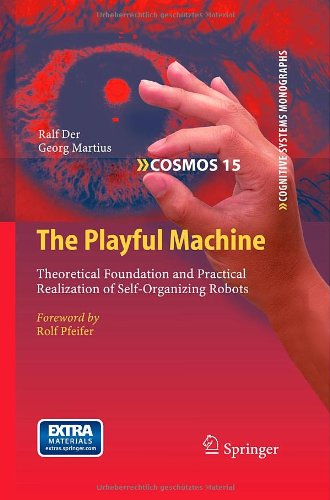
The Playful Machine
by Ralf Der, Georg Martius
Publisher: Springer 2011
ISBN/ASIN: 3642202527
Number of pages: 353
Description:
The book provides answers by developing a general principle---homeokinesis, the dynamical symbiosis between brain, body, and environment---that is shown to drive robots to self-determined, individual development in a playful and obviously embodiment-related way: a dog-like robot starts playing with a barrier, eventually jumping or climbing over it; a snakebot develops coiling and jumping modes; humanoids develop climbing behaviors when fallen into a pit, or engage in wrestling-like scenarios when encountering an opponent.
Download or read it online for free here:
Download link
(26MB, PDF)
Similar books
 Introduction to Autonomous Robots
Introduction to Autonomous Robotsby Nikolaus Correl - Magellan Scientific
This book introduces concepts in mobile, autonomous robotics to students in Computer Science. The book covers principles of robot motion, forward and inverse kinematics of robotic arms and simple wheeled platforms, perception, error propagation, etc.
(6200 views)
 Simulated Annealing
Simulated Annealingby Cher Ming Tan - IN-TECH
This book provides the readers with the knowledge of Simulated Annealing and its applications in the various branches of engineering. We encourage readers to explore the application of Simulated Annealing in their work for the task of optimization.
(15191 views)
 Mobile Robotics, Moving Intelligence
Mobile Robotics, Moving Intelligenceby Jonas Buchli - InTech
The book covers many aspects of the research in mobile robotics. It deals with different aspects of the control problem, especially also under uncertainty and faults. Mechanical design issues are discussed along with new sensor and actuator concepts.
(11524 views)
 Distributed Control of Robotic Networks
Distributed Control of Robotic Networksby Francesco Bullo, Jorge Cortes, Sonia Martinez - Princeton University Press
This introductory book offers a distinctive blend of computer science and control theory. The book presents a broad set of tools for understanding coordination algorithms, determining their correctness, and assessing their complexity.
(12588 views)